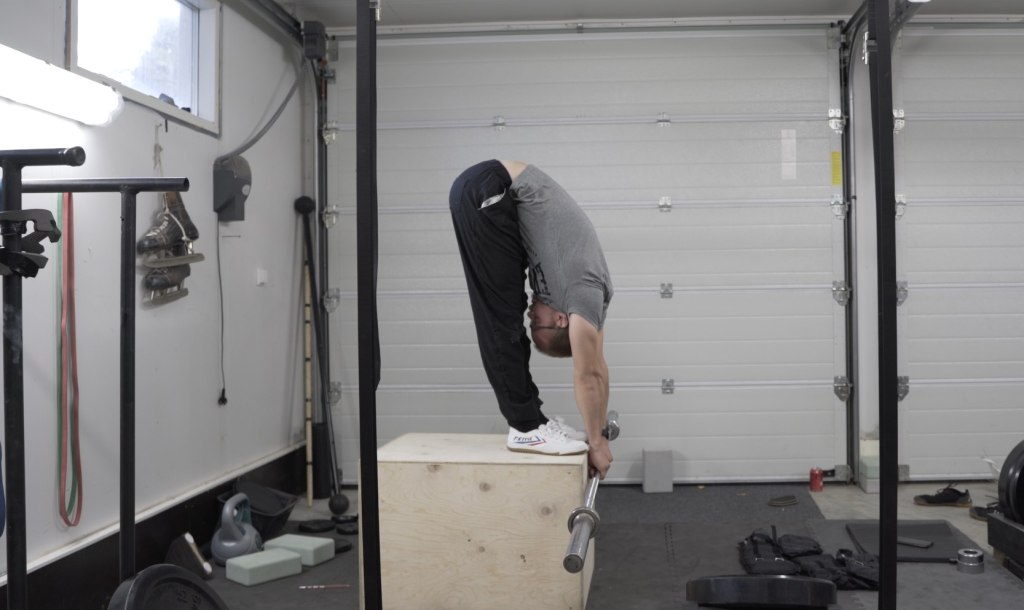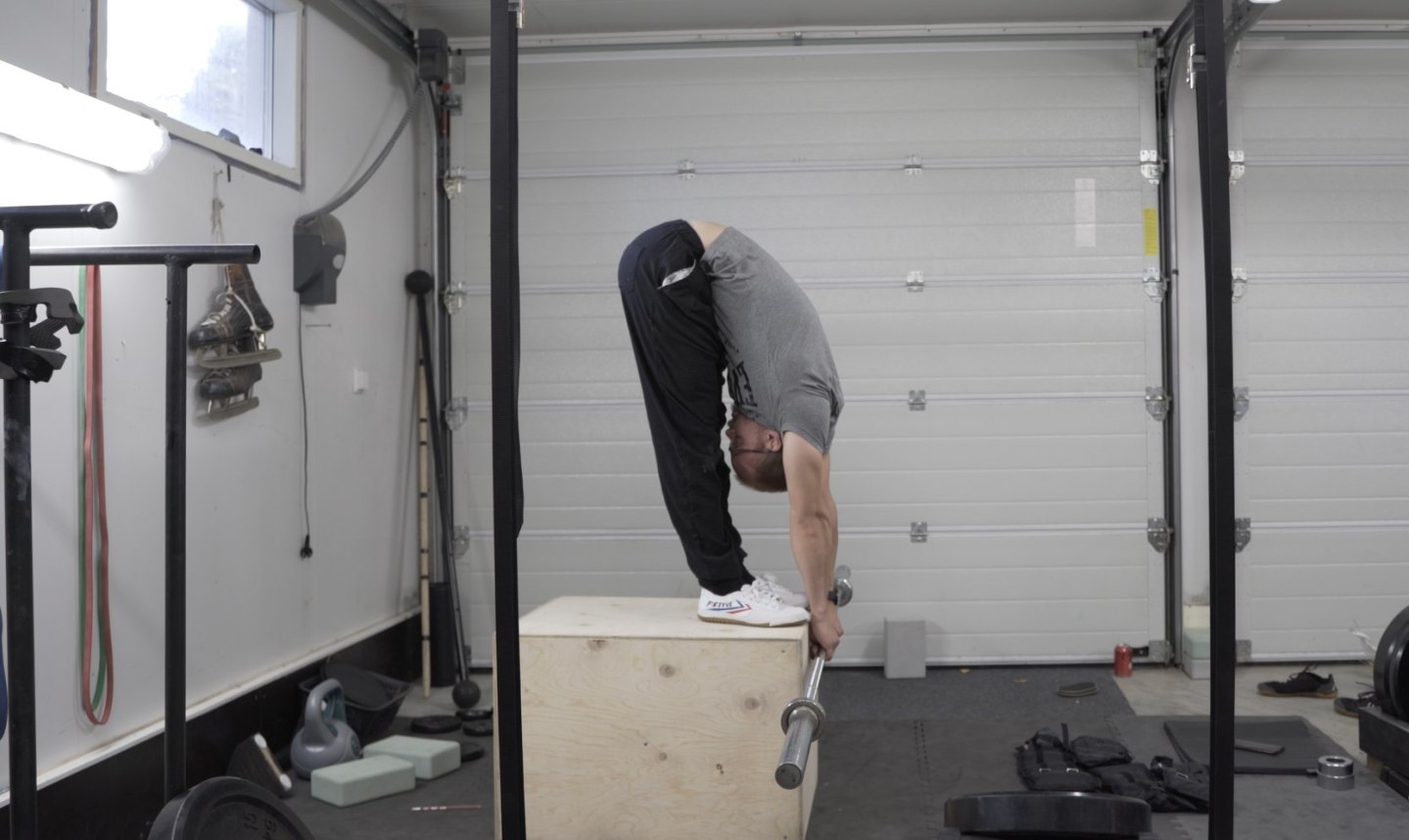A new article series
I will start a new article series by going through different movements that I recommend you test and include in your own training. The first to get into the limelight is a movement called Jefferson Curl.
Lifting with a rounded back
It is generally thought that lifting with a round back is dangerous for the back and spine. When you ask Google about it, you get answers for and against. Some swear by the neutral spine, while others say it doesn’t matter. The truth is probably – in this case too – somewhere between the extremes. I strongly believe that when lifting maximum weights, a more neutral spine is only a good thing, but there is also no reason to avoid rounding the back, as long as it is done progressively and with moderation. On the contrary, provided the spine is healthy, it likes to be rounded (and strengthened).
For this job, the Jefferson Curl is an excellent movement that can be used to strengthen and stretch the entire posterior chain. I myself have benefited enormously from this movement and because of this, I want to go through how you too can make your posterior chain feel the goodies.

Jefferson Curl
The idea of the movement is to round the spine from vertebra to vertebra with straight legs and reach with the hands towards the toes and past them as in the picture above.
When making Jefferson, it’s very important to leave the ego behind and start small. I recommend starting without any additional weight and experiment how the movement feels. It is good to visualize the rounding of the back by leaning against the wall so that the heels are 10-15 cm away from the wall. Try to round each vertebra at a time. In the upper position, the pelvis should be turned backward (posterior tilt) and in the final position, the goal should be to turn the pelvis forward (anterior tilt). The illustrative video can be seen below.
The video below shows the technique of performing the movement with additional weight. Try to keep your legs completely straight and locked. In the beginning, a little knee bend can be a good thing, but the goal is to have completely straight legs in the long run. Keep your weight on the ball of your feet and avoid leaning back as much as possible. Pull the navel towards the spine throughout the movement – this activates the abdominal muscles in the right way. In the lower position, try to actively move the upper body towards the thighs, so that the hip flexors have to work.
The toughest blacksmiths are able to make a repetition with additional body weight, but getting to such a result requires a really long dedication. On the other hand, when doing this without additional weight it gets somewhat harder as it requires a lot of active compression and the stretch does not come via external force. A small extra weight of a few kilos may be the best option in the beginning. I can’t stress enough how important it is to start doing this gently.
Below are a few different variations of the movement with which you can bring a new challenge to the traditional Jefferson Curl.
As you can see from the last video, this variation is very challenging for me too, and leaning back is obvious. Just got to grind forward…
Summation
No single movement makes you blissful, and the Jefferson Curl is no exception. However, its benefits for mobilizing the spine and strengthening and stretching the muscles that support the spine are undeniable. If you are not already familiar with the movement, definitely put it to the test. However, remember to start really carefully.
What do you think of this movement?
